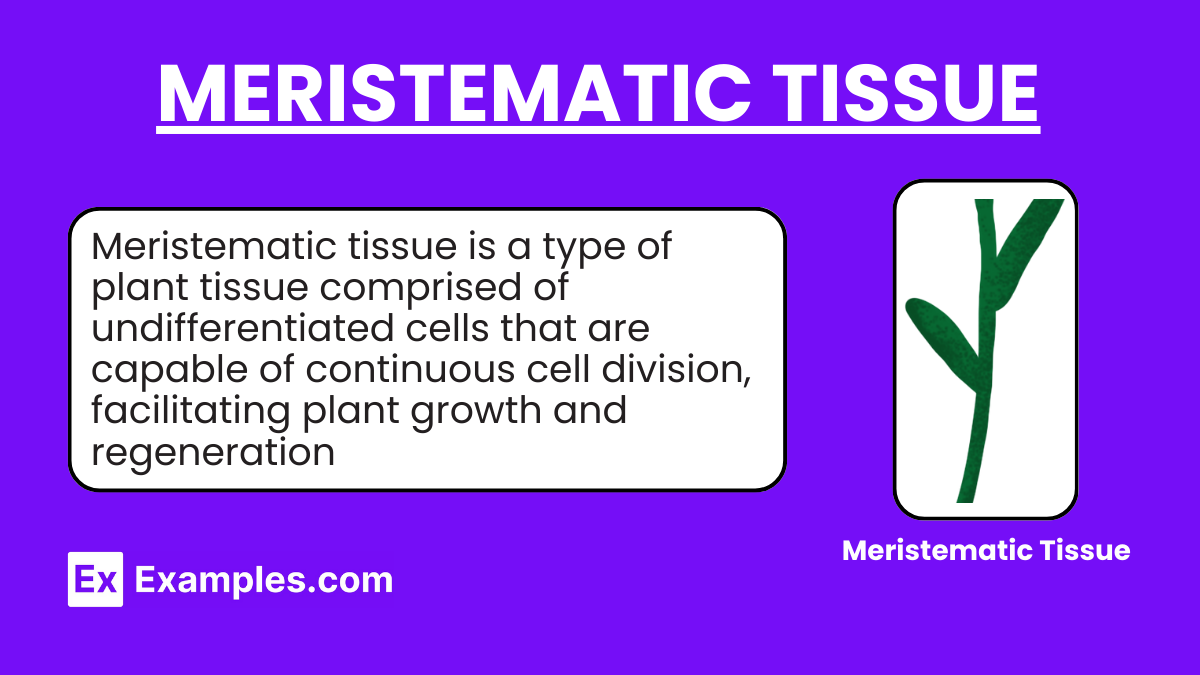What is the primary function of meristematic tissue in plants?
Photosynthesis
Storage
Growth
Protection


On a journey into the dynamic world of Meristematic Tissue, the engine room of plant growth and regeneration. This complete guide unveils the intricate processes driven by these specialized tissues, which are pivotal in forming new cells that enable plants to flourish and adapt. From the tips of roots to the buds of shoots, meristematic tissue plays a critical role in the plant’s ability to extend and renew itself. Through vivid examples, we’ll explore the definition, meaning, and indispensable uses of meristematic tissues, alongside the compounds they produce. Whether you’re a budding botanist or simply curious about the secrets of plant growth, this guide offers rich, NLP-friendly insights into the vibrant cellular activity that underpins the green world around us.
Meristematic tissue is a type of plant tissue comprised of undifferentiated cells known as meristematic cells. These cells are characterized by their ability to continuously divide and differentiate into various types of cells that contribute to the growth and development of the plant. Meristematic tissue is found in regions of the plant where growth is taking place, such as the tips of roots and shoots (apical meristems), the circumference of the stem and roots (lateral meristems), and at the base of leaves or internodes in some plants (intercalary meristems). The primary functions of meristematic tissue include facilitating growth in length (primary growth) through apical meristems and growth in thickness (secondary growth) through lateral meristems, allowing plants to increase in size and develop new organs throughout their life cycle.
Meristematic tissue, crucial for plant growth and development, exhibits several distinctive characteristics that enable its function in perpetuating growth. Here are the key features explained through points:
Meristematic tissues are crucial for plant growth and development, consisting of undifferentiated cells that divide continuously. These tissues are classified based on their location in the plant and their specific roles in growth. Below is a detailed explanation of the types of meristematic tissue:
Apical meristems are vital for primary growth (elongation) in plants, leading to the extension of the plant body in both the aerial and subterranean directions. This growth allows plants to explore new spaces for light and resources.
Lateral meristems are essential for secondary growth, which increases the thickness or girth of plants, especially noticeable in woody plants. This growth strengthens the plant and provides additional support for taller structures.
Located at the base of leaves or internodes, especially in monocots like grasses, intercalary meristems contribute to the elongation of stems and leaves from the base.
Intercalary meristems allow for the rapid regrowth of grasses and similar plants after being grazed by herbivores or cut. This ability ensures continuous growth and quick recovery from physical damage.
Meristematic tissues are foundational for the dynamic growth processes in plants, enabling them to grow taller, thicker, and recover from injuries. Each type of meristematic tissue plays a unique role, tailored to the specific needs of plant development and regeneration, showcasing the adaptability and resilience of plant life
Meristematic tissues are regions of actively dividing cells in plants, responsible for growth and development. Based on their function, meristematic tissues can be classified into several types, each playing a crucial role in the plant’s lifecycle.
1. What is meristematic tissue?
2. Where are meristematic tissues located in a plant?
3. What are the main functions of meristematic tissue?
4. How do meristematic tissues differ from permanent tissues?
5. What are the types of meristematic tissue based on location?
6. Can meristematic tissue differentiate into other types of tissues?
7. Why is the meristematic tissue important for plants?
8. How do plants grow taller and thicker?
9. Do all plants have meristematic tissue?
10. How is meristematic tissue studied?
Meristematic tissue is pivotal for plant growth, enabling elongation, thickness increase, and regeneration. This article’s table classification—apical, lateral, and intercalary meristems—illustrates how plants adapt and thrive. Understanding meristematic tissues sheds light on the dynamic nature of plant development, offering insights into how plants respond to environmental challenges and sustain life.
Text prompt
Add Tone
Types of Meristematic tissues
Meristematic Tissue: Classification Based on Function
What is the primary function of meristematic tissue in plants?
Photosynthesis
Storage
Growth
Protection
Where is apical meristem found in plants?
In the roots only
In the stems only
At the tips of roots and shoots
In the leaves
Which type of meristem is responsible for the thickening of stems and roots?
Apical meristem
Lateral meristem
Intercalary meristem
Vascular meristem
What are the two main types of lateral meristem?
Apical meristem and root meristem
Vascular cambium and cork cambium
Intercalary meristem and leaf meristem
Stem meristem and flower meristem
Intercalary meristems are typically found in:
Woody plants
Herbaceous plants
Monocots
Dicots
Which characteristic is typical of meristematic cells?
Large vacuoles
Thick cell walls
High mitotic activity
Presence of chloroplasts
The tissue responsible for the production of xylem and phloem is the:
Apical meristem
Cork cambium
Vascular cambium
Intercalary meristem
Which type of meristem is involved in the regeneration of damaged plant tissues?
Apical meristem
Lateral meristem
Intercalary meristem
All of the above
Meristematic tissue is characterized by:
Differentiated cells
Cells with large vacuoles
Undifferentiated, actively dividing cells
Presence of secondary cell walls
What role does the cork cambium play in plant growth?
It increases the length of the plant.
It produces the outer protective layer, or bark.
It generates flowers and fruits.
It forms the main root system.
Before you leave, take our quick quiz to enhance your learning!

